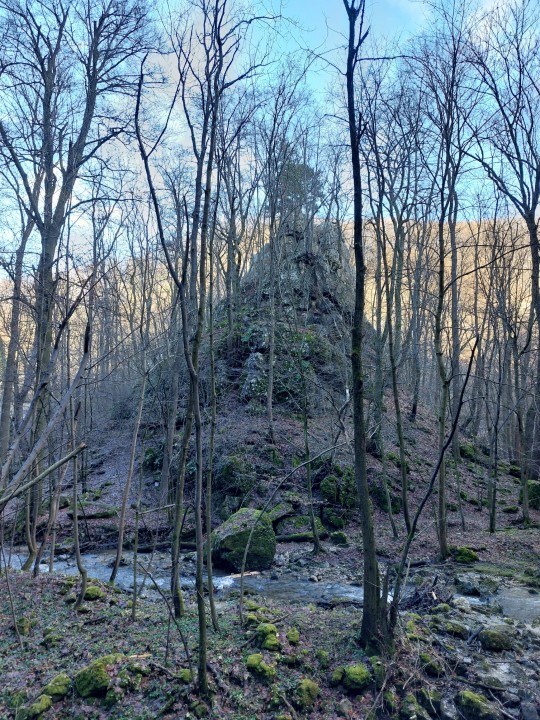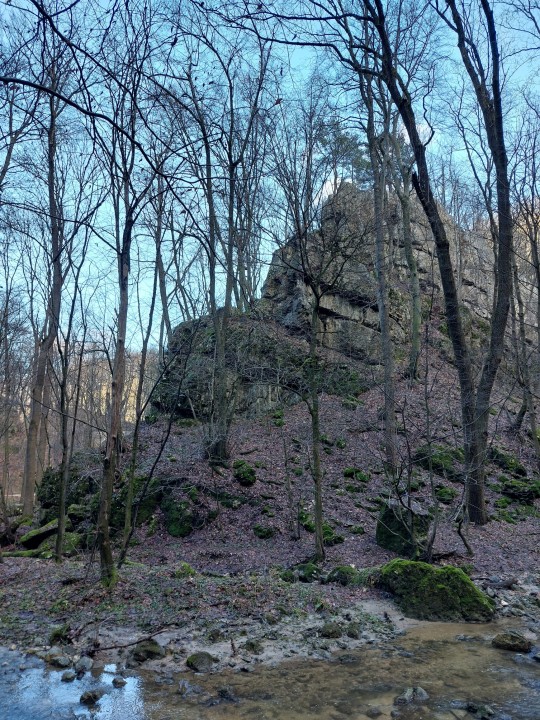#Bakony
Explore tagged Tumblr posts
Text








Többet tanyázott rajtam mint a Tigris sokszor egy egész hét alatt. :D
13 notes
·
View notes
Text
5 notes
·
View notes
Text
"Legalább egy tucat fajt csak itt írtak le, mint például a Hungarosaurus tormai páncélos dinoszauruszt, az Iharkotusuchus makadii nevű krokodilt, a Bakonydraci galaczi nevű repülő hüllőt, vagy az Ajkaceratops kozmai nevű növényevő dinoszauruszt, amelyek nevükkel a vidéket is megidézik. Ne hagyjuk ki a Foxemys trabanti teknőst sem, amelyet az ásatásokon használt strapabíró Trabantok után neveztek el."
7 notes
·
View notes
Text
Megvolt az év utolsó mászása is. Még kell egy utolsó futás is ha hazaértem.
Szerintem nekem már 9-kor vagy 10-kor végem lesz és megyek aludni, regenerálódni.



Ez a Bucsek Henrik emlékút nagyon jó amúgy. Sokszor végigmentem már rajta, de egyes részei még mindig tudnak picit ijesztőek lenni ilyen nyirkos időben. Nagyon ki tudja kapcsolni az agyat. Két gondolat létezik ilyenkor. Ahol állok, ott stabilan állok-e, és hogy hova fogok lépni következőnek.
17 notes
·
View notes
Photo

A Bakony az egyik legcsodálatosabb kirándulóhely Magyarországon. #magyar #Magyarország #magyartájak #népviselet #magyargasztro #példaképeink #népzene #magyartudósok #Bakony
0 notes
Text


The Mangalica (also Mangalitsa or Mangalitza) is a Hungarian breed of domestic pig. It was developed in the mid-19th century by crossbreeding breeds from the nearby Romanian Salonta and Hungarian Bakony with the European wild boar and the Serbian Šumadija breed.[3] The Mangalica pig grows a thick, curly coat of hair. The only other pig breed noted for having a long coat is the extinct Lincolnshire Curly Coat pig of England.
The name Mangalica derives from Serbo-Croatian, meaning approximately roll-shaped and suggesting the animals are well fed.[4]
Mangalica was the most prominent swine breed in the region until 1950 (30,000 of them were in Hungary in 1943).[1] Since then, the popularity as well as the population of Mangalica has been decreasing, with the rising availability of food from farther away and refrigeration.[7] In 1991, there were fewer than 200 remaining Mangalica in Hungary. Monte Nevado, a Spanish company began the breeding and recovery of Mangalica, and they were awarded with the Middle Cross of Hungary in 2016.[8] Nowadays, the keeping of Mangalica has become a popular hobby.[1] Slightly over 7,000 Mangalica sows in Hungary are producing around 60,000 piglets a year.[9] [this seems like a crazy number of piglets but the source corroborates it. i guess theyre all being eaten?]
In Serbia, the breed (which is called mangulica in Serbian) almost completely died out in the 1980s. In 1998, Mangalica were introduced into the Zasavica wetlands. They are left to roam free in a reservation, becoming partially feral, with cases of breeding with wild boars known.
378 notes
·
View notes
Text
Phalacrocorax bakonyiensis Horváth et al., 2024 (new species)

(Type humerus [upper arm bone] of Phalacrocorax bakonyiensis, from Horváth et al., 2024)
Meaning of name: bakonyiensis = from the Bakony Mountains
Age: Miocene (Tortonian–Messinian)
Where found: Várhegy Cave No. 2, Veszprém, Hungary
How much is known: Three fragmentary humeri (upper arm bones), including one belonging to a juvenile individual.
Notes: Phalacrocorax is an extant genus of cormorants, a group of waterbirds that primarily catch prey by swimming underwater, propelling themselves with their feet. P. bakonyiensis was relatively small for a cormorant, being smaller than the extant great (P. carbo) and double-crested (Nannopterum auritum) cormorants, but larger than the pygmy cormorant (Microcarbo pygmaeus).
Remains of P. bakonyiensis were discovered in a cave, where they might have been accumulated as the remains of prey that had been fed on by an owl. Additional cormorant fossils that might belong to P. bakonyiensis had been previously collected from the same site in 1991, but have since been lost.
Reference: Horváth, I., J. Futó, and J. Kessler. 2024. Phalacrocorax bakonyiensis n. sp., a new species of cormorant from the Late Miocene of Hungary. Ornis Hungarica 32: 222–230. doi: 10.2478/orhu-2024-0016
#Palaeoblr#Birblr#Dinosaurs#Birds#Phalacrocorax bakonyiensis#Miocene#Europe#Phaethoquornithes#2024#Extinct
65 notes
·
View notes
Text
Két hét:
Rendszerhiba miatt átmenetileg nem lehet helyjegyet váltani a nemzetközi railjet vonatokra
Új rekord a MÁV-nál: a csigajelmezes vonalon 4529 percet késtek a vonatok júliusban
A nyilvántartás elindítása óta soha nem késtek annyit a feláras vonatok júliusban, mint idén
Nyitott ajtóval, 100 kilométer/órával robogott a Bakony InterCity
Egyelőre csak a tervek nyilvánosak, de új menetrend szerint, több vonalon negyedórával tovább tarthat majd az utazás
Az ötvenéves járművekkel nem tudnak nekivágni a 40 foknak, ezért jövőre vonatok helyett pótlóbuszokkal kezeli a hőséget a MÁV
Eltört a sín, teljesen leállt a forgalom a dél-balatoni vasútvonalon
Kisiklott egy 50 éves - klíma nélküli - kocsikból összetákolt InterCity a Keleti pályaudvarnál, egy másik vonat majdnem belerohant

Mit is mondott Lázár János közlekedési miniszter, mennyi narancs kellene a Fantába, hogy minden jó legyen?
20 notes
·
View notes
Text
Az egyik legszebb szakasz az Országos Kéktúrán ez a patakvölgy. Most meg nincs patak. De ötezerrel irtjuk az erdőt.
13 notes
·
View notes
Text
Linquenda...
Linquenda tellus et domus et placens uxor… Horatius
Csak az a langyos ősz ne jusson már eszedbe! A gomba, cserfa illatú, a szarvashangon bődülő Bakony! Nézd a szomszéd ház málló tűzfalát a kórházablakon. Hidd el: már csupa november jön eztán, szél és eső csapkodja a világot. Minden halálos szürkeségbe vész. Ahogyan most te látod. A víztükör se jusson már eszedbe! (Négy napja szomjazol.) A tó tegnap kiszáradt. Partján üres a ház. Bezörgettem. Senki se válaszol. Nem esik többé kék reggeli hó, szétszakadozott gyöngysora a zománc nyakú vadkacsáknak, Elmennek ők is egyesével, a régi társak. Latin poéták, görög istenek – ők is elúsztak cifra gályán. Törött karjukkal, csonkán intenek. Mosolyuk csorba márvány. Hallod, már világűri szél fütyül papírcafattá málló tetteinken. Ablak, tűzfal és mennyezet. Milyen jó lesz elmenni innen.
A karcsú feleség megőszült tegnap óta. Holnap kivágják azt a kertet.
Így könyörögtem apámhoz magamban haláloságya mellett.
Rab Zsuzsa, 1967
4 notes
·
View notes
Text
got a translation gig and i have to translate terms like bakony művek járműtechnikai biszbasz főmérnökség why would you do this to me
#guy who wrote that text: im going to share all the gritzy details (electrotechician jargon) of my life so the poor bastard who translates#this can really work for their money#my post
6 notes
·
View notes
Text

“A woman displays some of the pottery used to prepare meals outside the kraal. Such clay pottery and a variety of local crafts are on sale at the Bakoni Malapa Museum.”
From: “places to visit in Southern Africa” 1995.
3 notes
·
View notes
Text

3 notes
·
View notes
Photo

A Bakony az egyik legcsodálatosabb kirándulóhely Magyarországon. #magyar #Magyarország #magyartájak #népviselet #magyargasztro #példaképeink #népzene #magyartudósok #Bakony
0 notes


